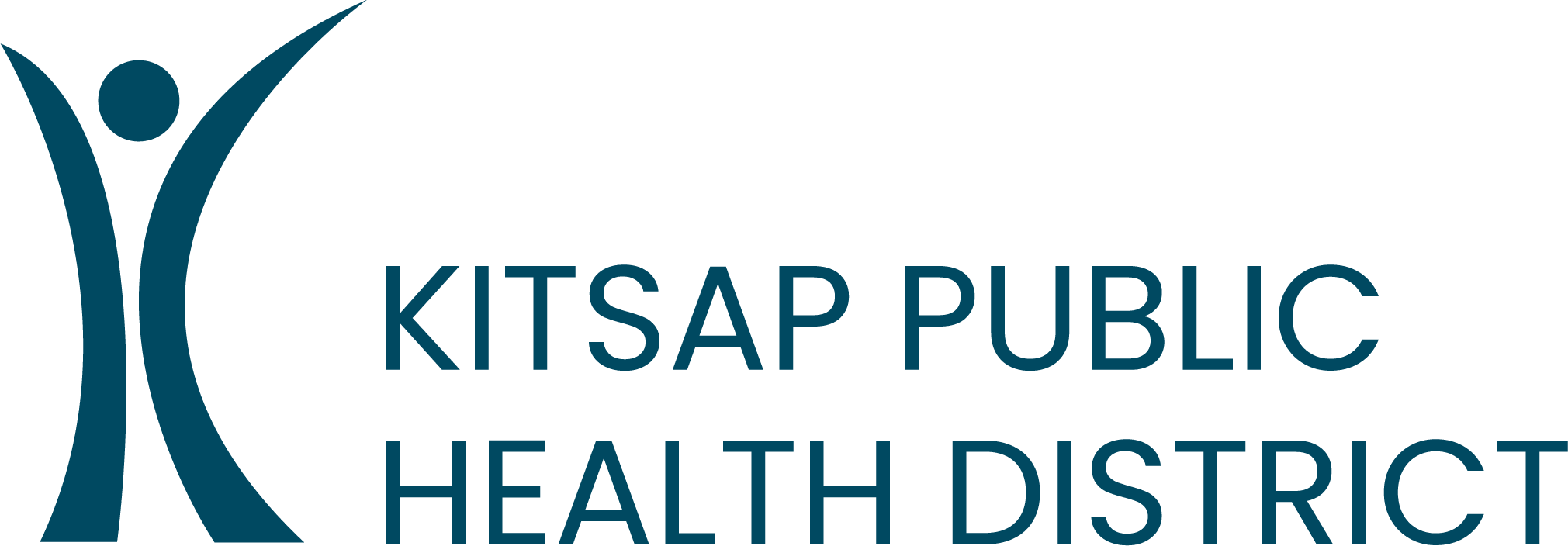
Using a mobile device? Switch to a computer for the best viewing experience.

Preventing Pollution, Protecting Public Health
Our Water Pollution Identification and Correction (PIC) Program protects public health and prevents fecal pollution in Kitsap County surface waters.
We take water samples from dozens of streams and swimming beaches across the county to check for fecal pollution. Fecal pollution can come from humans or animals, and can carry viruses, bacteria, and parasites that make people sick.
Water sample results can help us find and fix pollution sources to help keep our streams, swimming beaches, and shellfish beds safe and healthy for everyone to enjoy.
This Water Quality Report summarizes water quality monitoring results from the 2024 water year (Oct. 1, 2023 to Sept. 30, 2024).
Note: Kitsap Public Health District monitors surface water quality in unincorporated Kitsap County with funding from County stormwater fees and within Poulsbo city limits through a monitoring services contract. Because of this, our Water Quality Report does not include data for streams contained entirely within Bainbridge Island, Bremerton, or Port Orchard city limits.
Stream Sampling Results
The State Freshwater Standard
The state Department of Ecology establishes standards for surface water quality. The freshwater standard is applied to “primary contact” water bodies, where people are likely to become submerged or ingest water through recreational activities such as wading and swimming.
The state standard for freshwater is based on the geometric mean value (GMV) of E. coli (EC) bacteria identified in 100 milliliter (100 ml) water samples. The geometric mean is a type of average used to represent the “center” value of a dataset. Bacterial concentrations can be highly variable, so the geometric mean is useful for assessing trends.
Part 1: Annual GMV <100 EC per 100 ml
Part 2: Not more than 10% of all samples collected for calculating geomean > 320 EC/100ml
Met Standard
The stream had low bacteria levels and met both parts of the standard
Met Part 1 of Standard
The stream had periodic high bacteria levels and failed part 2 of the standard.
Failed Standard
The stream had high bacteria levels and failed both parts of the standard.
Data Dashboard
Using a mobile device? Switch to a computer or tap here to see view our interactive sampling results dashboard.
Stream Advisories
We issue public health advisories for streams that have consistent levels of high fecal pollution. Advisories are posted to protect the health of people who might come into contact with stream water, especially children.
These creeks have advisories in place for 2025:
Lofall Creek (Upper Hood Canal)
Perry Creek (Liberty Bay)
Advisory signs will be posted at public access points.

Water Quality Monitoring Highlights
Statistical highlights from our pollution prevention work in the last year. Hover over each image to learn more.

Cleaner Water, Healthier Shellfish
All streams in Kitsap County eventually drain into the Puget Sound, including many that flow into shellfish growing areas. Because of this, pollution in surface waters contributes to contamination of shellfish beds. We strive to improve water quality in shellfish growing areas by reducing pollution in surface waters, such as lakes and streams.
Our PIC Program began in 1996. Since then, there has been a net increase of more than 5,000 acres of shellfish beds approved for harvest around Kitsap County.
Water Quality in Kitsap Lakes
The Health District monitors for health risks at the five most popular lakes for recreation in the county during summer months to help keep swimmers healthy.
We issue health advisories when water samples show high levels of E. coli bacteria at swimming areas or when potentially toxic cyanobacteria (also known as blue-green algae) blooms are present. Some cyanobacteria blooms produce toxins that can make people sick and kill animals when levels are high.
We encourage community members to notify us when they see a bloom in a lake that we do not regularly monitor. We will visit the lake to investigate and will post an advisory if needed.
Lake Advisories
Lake advisories issued in the last calendar year. Click a sign to view the full advisory.
Help Prevent Pollution
Fecal pollution in surface water can come from many sources, including wildlife, pets, livestock, and people. Pollution from wildlife occurs naturally and is difficult to prevent. Other sources, such as sewage leaks, pet waste, and agricultural runoff, can be prevented by people and organizations.
The video below explains basic pollution sources and preventions steps. Learn more at cleanwaterkitsap.org.
We survey Kitsap County's shoreline in segments each year, with each segment getting surveyed at least once every six years. In 2024, the team focused on the Kingston area and Colvos Passage in Port Orchard. In 2025, you will see us walking the shoreline in the mid-Hood Canal area and Port Gamble.
During a shoreline survey, our team walks the entire stretch of shoreline. They search for water flowing onto the beach from pipes, culverts, and small streams. We take water samples of the flows, which are then tested in a laboratory. If the samples are high in fecal pollution, we will take two more samples to confirm the high levels. If the confirmation samples are high again, we will begin looking for the pollution source(s). If we find human sources of pollution, we work to fix those sources.

Fecal pollution can come from septic systems that have failed or are experiencing problems, pet and livestock waste, wildlife, roadway runoff, or leaky sewer pipes. Although we work with the community to try to correct pollution as soon as possible, it can sometimes take months or years of work to see results.

Tracking Pollution on Our Shorelines, Trickle by Trickle
Our Partners

The Kitsap Public Health District’s water quality work is made possible by Clean Water Kitsap, a multi-agency partnership that receives funding from county stormwater fees. Clean Water Kitsap protects people, property and natural resources by reducing flooding and stormwater runoff and preventing stormwater pollution.
Our Team
Water Pollution Identification & Correction Program
Dayna Katula
Program Manager
Leslie Banigan
Senior Environmental Health Specialist
Brandon Kindschy
Environmental Health Specialist
Ross Lytle
Senior Environmental Health Specialist
Ian Rork
Senior Environmental Health Specialist
Nolan Simmons
Environmental Health Specialist
Tobbi Stewart
Environmental Health Specialist
Laura Westervelt
Environmental Health Specialist
Report Design
Tad Sooter
Communications Program Manager
Katie Baker
Outreach Specialist
Data Dashboard & Maps
Gabriel Hammond
GIS analyst
















